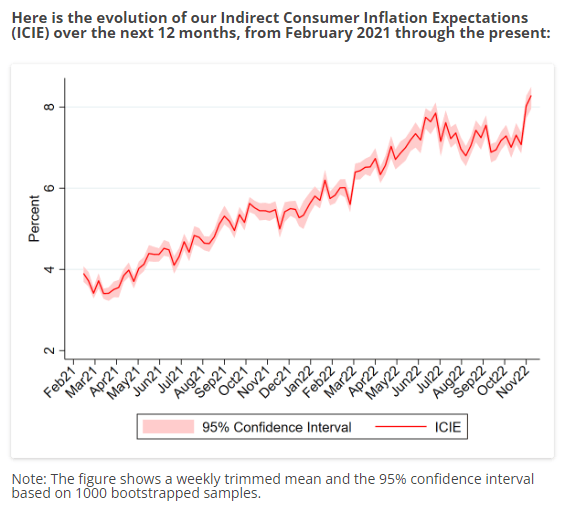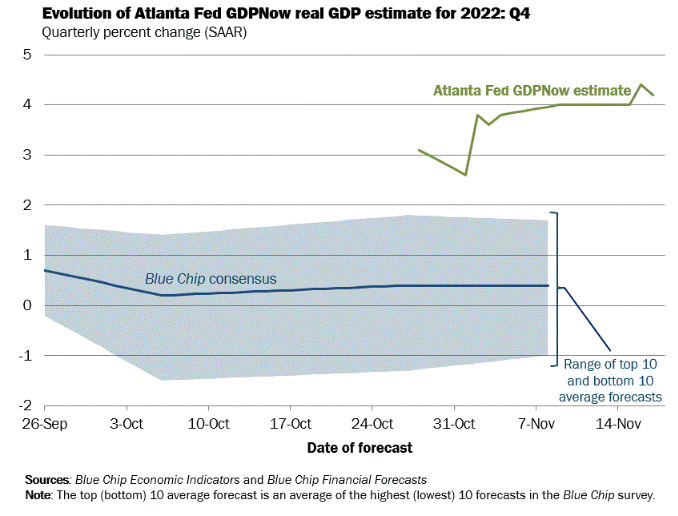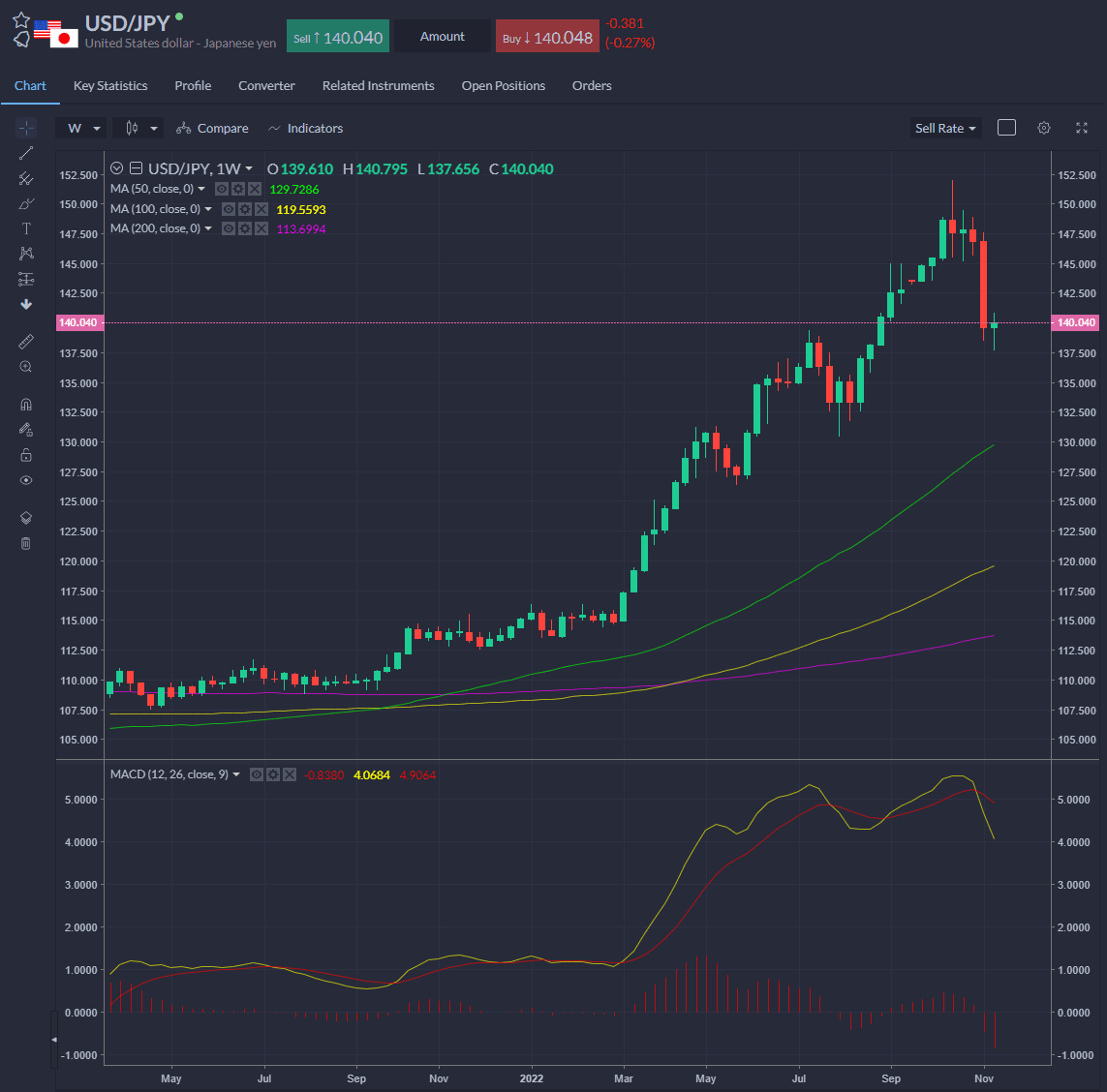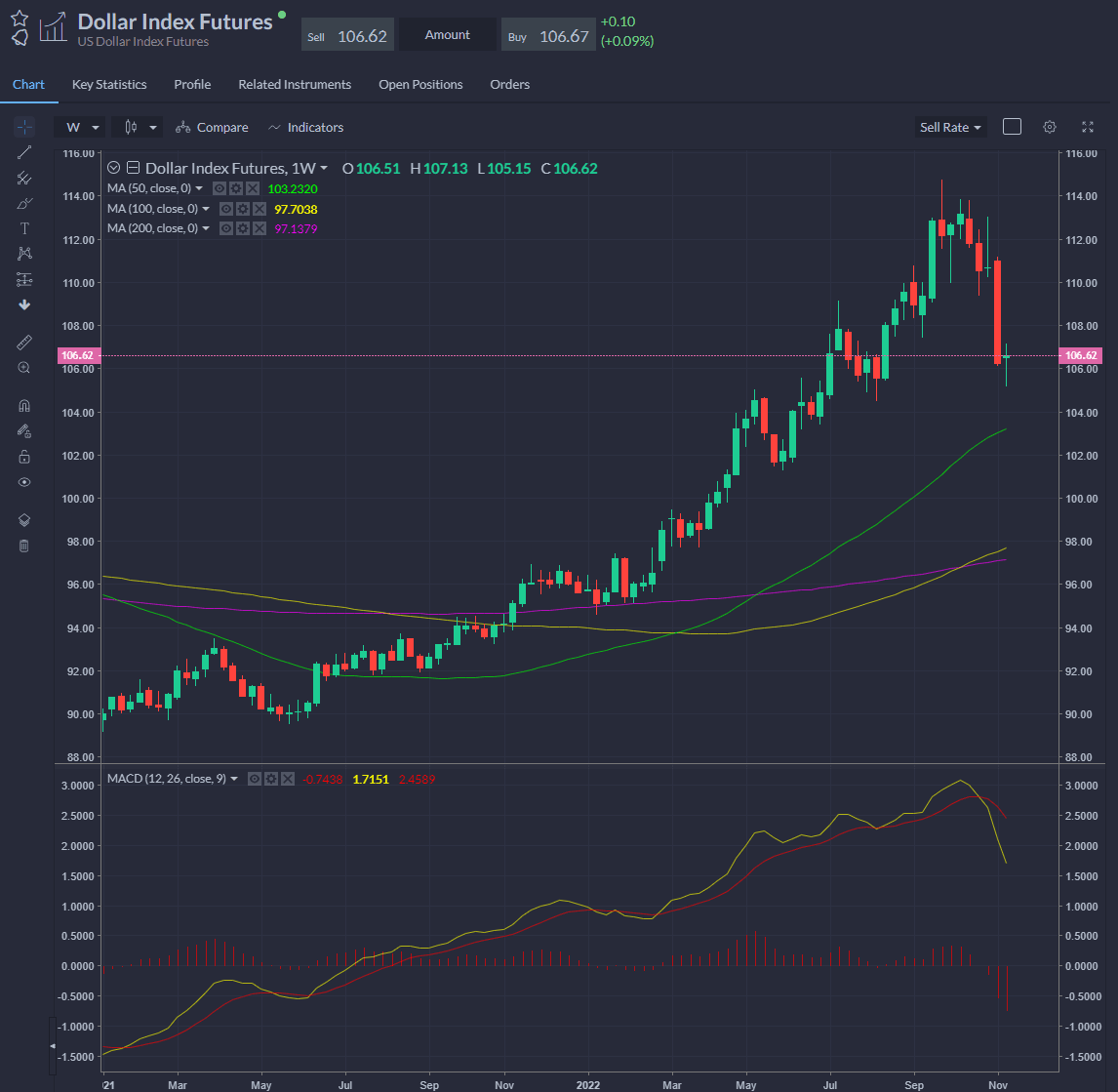
Friday Nov 18 2022 10:36

7 min
A new gauge of inflation expectations suggests the Federal Reserve has much more to do. The Indirect Consumer Inflation Expectations (ICIE) index, a weekly survey of consumers’ views on prices from the Cleveland Fed and Morning Consult, does not make for easy reading for Fed officials. Now it’s a novel system, but one that probably reflects consumers’ views better than the usual indices since inflation is a pretty hard concept for most people to really grasp. Instead of consumers being directly asked to report what they expect to happen to inflation, they are asked to report the income change required over the next 12 months they think they would require to be equally well-off. You can read more about this survey here.

Meanwhile, the Atlanta Fed’s rosy growth outlook is just confusing everyone.

This is not the doom and gloom outlook described in yesterday’s Autumn Statement. Perhaps things are not so bad? UK consumer confidence edged up to –44 from –47 in October, but is still barely above the record low –49 in September. Meanwhile retail sales in Britain rose 0.6% in October from the previous month, though below pre-pandemic levels. Which kind of all goes to show that if things do pick up a bit from month to month, you have to remember it’s from a pretty low level in the first place.
I repeat that in a stagflation world, there are no good policy choices… nevertheless a 23% hike in fuel duty is, during a cost-of-living crisis when people are struggling to meet basic bills, to say the least, odd. It is clearly inflationary, just as the Budget was supposed to work in lockstep with the Bank of England to reduce inflation. Driving up the cost of fuel is obviously not just inflationary but also bad for growth. It’s a pro-stagflation policy totally at odds with restoring not just credibility but the sustainability of growth and inflation projections.
Stocks in Europe traded a little firmer this morning after declines on Wall Street for a second day showed signs the pivot bulls were showing weariness. St Louis Fed president James Bullard, a hawk, said “the policy rate is not yet in a zone that may be considered sufficiently restrictive”, adding that “the change in the monetary policy stance appears to have had only limited effects on observed inflation, but market pricing suggests disinflation is expected in 2023”. Shorter-dated Treasury yields jumped, pushing stocks lower.
The rate of disinflation is the key here. It’s the old peak vs plateau argument. BNP Paribas in a note this week says “What matters now ... is the speed of disinflation because this will influence Fed policy ... When fears of further significant rate hikes will have eased, recession concerns will take over as dominant topic.” Today we hear from MPC members Mann and Haskell, whilst US existing home sales is the only major economic data release.
Is Japan still a basket case? Inflation hit a 40-year high, with core CPI rising 3.6%. Of course, the Bank of Japan cannot stop easing. Governor Kuroda said, “the Bank will continue with monetary easing, aiming to…achieve the price stability target of 2 percent in a sustainable and stable manner, accompanied by wage increases”. USDJPY weekly rejection of the 137.50 area.

Dollar index – weekly rejection of the 105 area we’d talked about.

